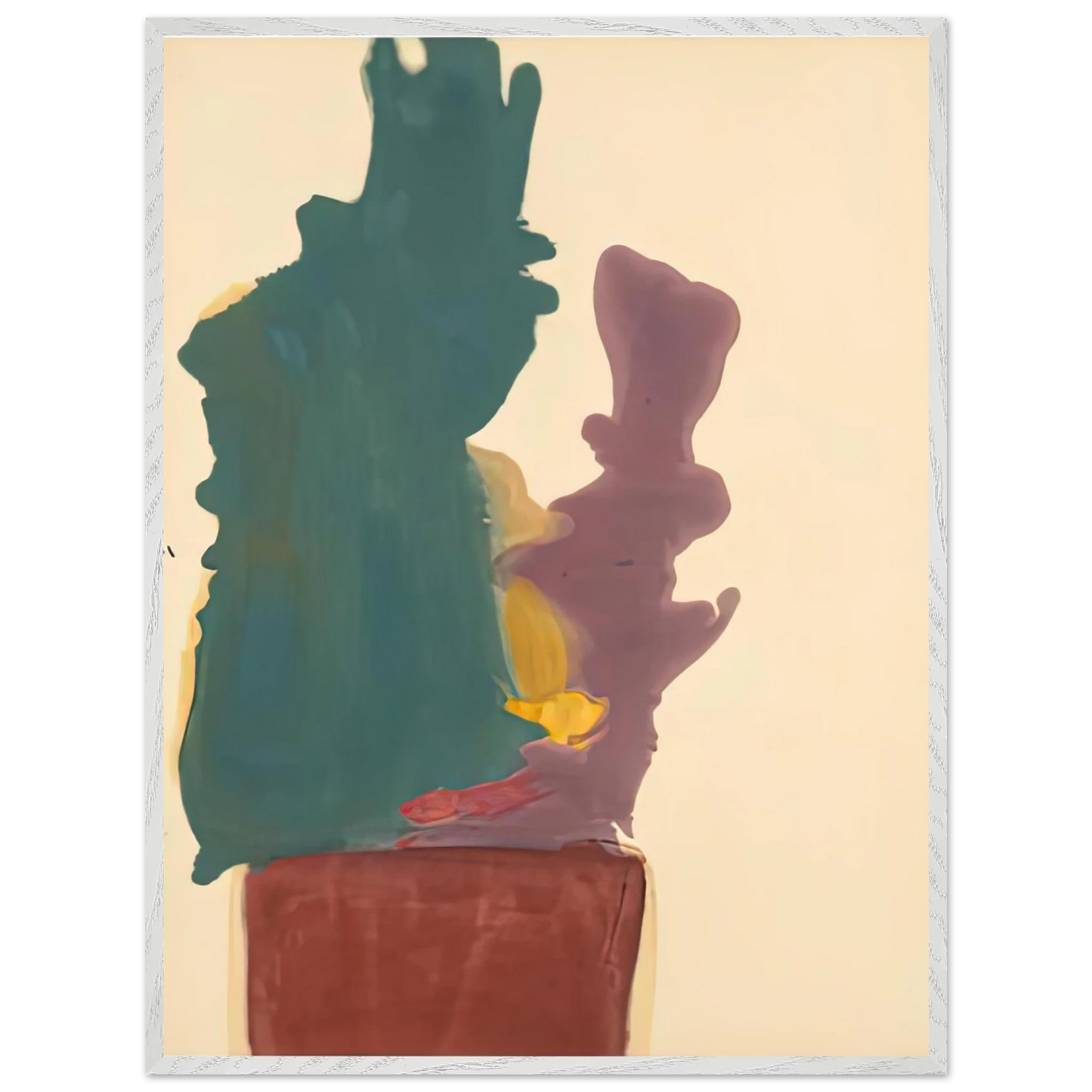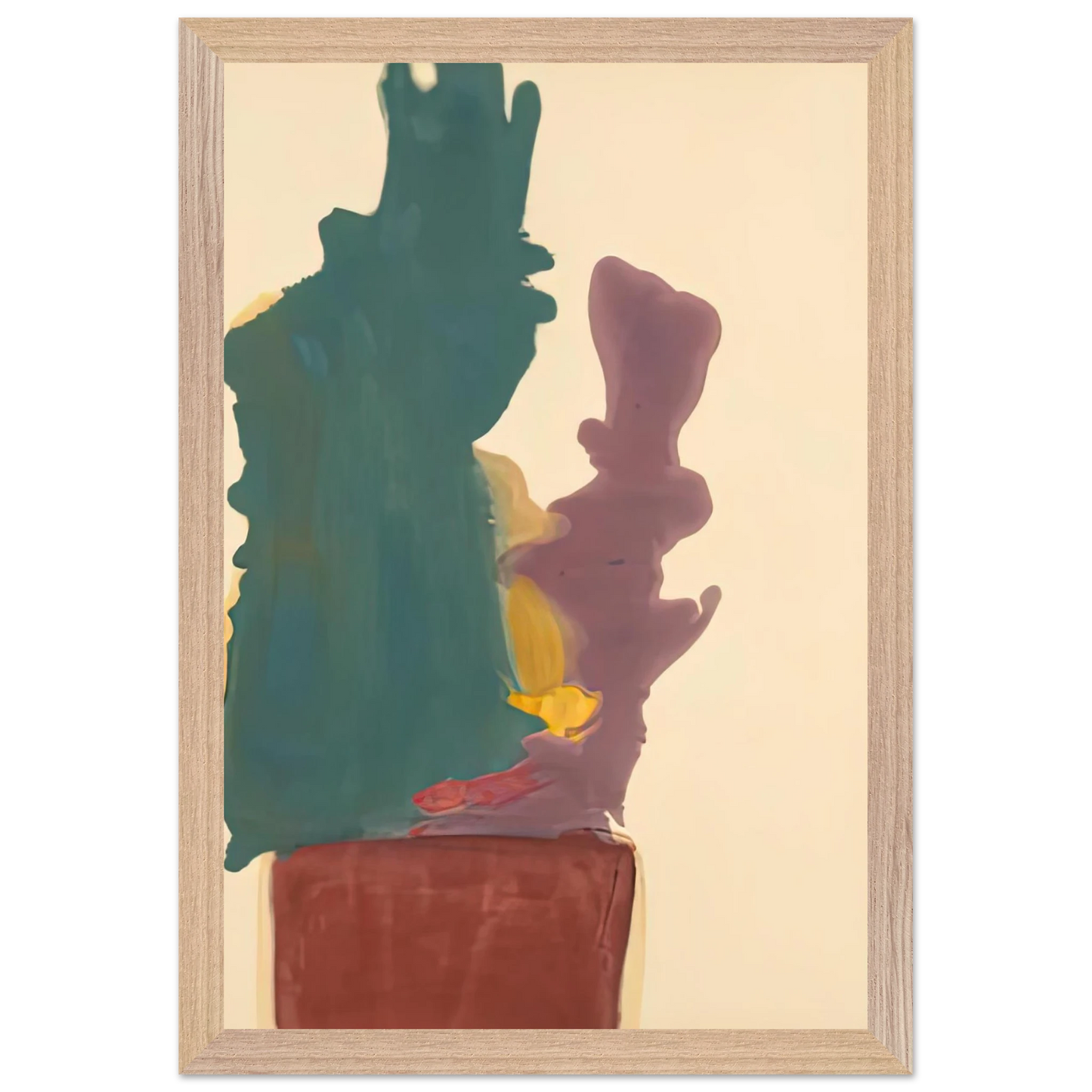RedKalion
Helen Frankenthaler - Evil Spirit, 1963- Wall Art
Helen Frankenthaler - Evil Spirit, 1963- Wall Art
Couldn't load pickup availability
Discover more in our: Helen Frankenthaler Wall Art Poster Collection
Discover our Fine Art Posters - Iconic artworks with vivid colors using using our fine art 12-color printing technology. Perfect for art lovers and designers alike.
- Color Vibrancy: Our 12-color fine art printing technology delivers vivid, accurate colors with stunning depth, far beyond standard 4-color inkjet printing technology.
- Paper Finishing: Smooth matte finish for a clean, glare-free display.
- Paper Weight: 200 gsm (80 lb), thickness: 0.26 mm (10.3 mils).
- Available Sizes: Offered in a variety of sizes to fit any space or frame.
- Eco-Friendly Materials: Printed on environmentally conscious, FSC-certified paper.
No minimum orders, printed and shipped on demand to guarantee freshness and customization for every order.
Posters have long transcended their initial role as mere promotional tools, evolving into cherished pieces of wall art that breathe life and personality into any space. From vibrant movie posters to iconic band prints, and especially high-quality art reproductions, posters offer an accessible and versatile way to engage with the world of visual culture. They transform blank walls into captivating galleries, reflecting individual tastes, passions, and design sensibilities. Whether adorning a cozy living room, a minimalist office, or a dynamic studio, art posters serve as powerful focal points, conversation starters, and daily sources of inspiration. The sheer variety available, from glossy paper prints to sophisticated canvas art, ensures that there is a perfect poster for every aesthetic and budget, making exceptional art more attainable for everyone. The appeal of wall art posters lies in their ability to democratize art. Historically, owning fine art was a luxury reserved for the elite, but today, thanks to advanced printing technologies, masterpieces can be enjoyed in homes worldwide as stunning art prints. This shift has opened up the world of art history and contemporary art to a much broader audience, allowing individuals to curate their personal collections of famous paintings and groundbreaking modern works. Beyond mere decoration, these art prints act as windows into different eras, movements, and artistic minds, offering educational and aesthetic value simultaneously. They allow us to bring the impactful presence of a museum exhibit directly into our personal environment, fostering a deeper appreciation for artistic expression and its power to evoke emotion. Among the pantheon of influential 20th-century artists, Helen Frankenthaler stands out as a pioneering figure whose innovative approach redefined abstract art. Born in 1928, Frankenthaler emerged during the heady days of Abstract Expressionism, a movement dominated by male artists, yet she forged her own distinct path with unparalleled creativity and daring. She is celebrated for her pivotal role in developing Color Field painting, a style characterized by large fields of solid color, often applied thinly to soak into the unprimed canvas. Her work eschewed the aggressive brushstrokes of her contemporaries, opting instead for a more fluid, lyrical, and introspective expression of color and form. Frankenthaler’s legacy is monumental, influencing generations of artists and solidifying her position as one of modern art's most significant innovators. One of Frankenthaler's most compelling and intensely captivating works is "Evil Spirit," painted in 1963. This masterpiece embodies her signature "soak-stain" technique, where thinned paint is poured directly onto raw, unprimed canvas, allowing the pigment to literally soak into the fabric. This method blurred the line between painting and drawing, creating luminous, transparent veils of color that appear to emanate from within the canvas itself, rather than resting on its surface. The unprimed canvas absorbed the paint with varying degrees of saturation, leading to soft, diffuse edges and an organic, almost accidental quality that belied the artist's meticulous control and keen aesthetic judgment. "Evil Spirit" exemplifies this approach, showcasing a profound interplay between chance and deliberation, spontaneity and structure. "Evil Spirit, 1963" immediately commands attention with its dramatic scale and powerful composition. The painting is a visceral explosion of color, primarily dominated by deep, brooding blues and blacks, contrasted sharply with fiery reds and vibrant oranges, all punctuated by areas of stark white and hints of earthy browns. These hues are not merely laid side-by-side but seem to bleed, merge, and swirl into one another, creating a sense of dynamic movement and immense emotional depth. The raw, exposed canvas plays a crucial role, allowing the colors to breathe and interact, creating a luminous quality that is both expansive and intensely focused. The title itself, "Evil Spirit," hints at the underlying tension and raw energy permeating the canvas, inviting viewers to delve into its enigmatic depths. The composition of "Evil Spirit" is a masterclass in abstract design. Large, amorphous shapes ebb and flow across the canvas, reminiscent of turbulent waters, volcanic eruptions, or primal forms emerging from a void. A central, almost menacing dark mass, perhaps the "evil spirit" itself, anchors the composition, radiating an unsettling power. Around this core, lighter, more ephemeral forms dance and swirl, creating a push and pull between dissolution and formation. The soak-stain technique ensures that the edges of these forms are soft and atmospheric, preventing them from becoming rigid or overly defined. This fluidity allows the painting to feel alive, as if the forms are perpetually shifting and transforming, mirroring the ephemeral nature of emotions and unseen forces. Examining the color palette further reveals Frankenthaler’s brilliance. The deep blues and blacks contribute a sense of mystery, solemnity, and perhaps even despair, grounding the "evil" aspect of the title. These somber tones are dramatically interrupted by vivid reds and oranges, which burst forth like flames or raw passion, injecting an intense energy and a sense of struggle or defiance. The strategic use of white areas provides moments of respite and light, preventing the painting from becoming overwhelmingly dark, while also highlighting the transparency and layering of the colors. Each hue feels deeply integrated into the canvas, a part of its very fabric, rather than an applied surface layer, giving the work a profound organic unity. "Evil Spirit" is not merely a depiction of a specific narrative but an exploration of raw emotion and psychological states. Frankenthaler, like many Abstract Expressionists, sought to convey inner feelings and universal human experiences through non-representational forms. In "Evil Spirit," the title guides our interpretation, suggesting themes of struggle, confrontation with dark forces, or the unpredictable nature of the subconscious. Yet, the painting remains open to individual interpretation, allowing each viewer to project their own experiences and emotions onto its expansive surface. It is a testament to the power of abstract art to communicate complex ideas and feelings without recourse to literal representation. Bringing a reproduction of "Helen Frankenthaler - Evil Spirit, 1963" into your home as wall art is an incredible way to infuse your space with modern art history and sophisticated design. As a premium art print, whether on high-quality paper or as a stunning canvas print, "Evil Spirit" serves as an immediate statement piece. Its dramatic colors and dynamic composition make it an ideal focal point for contemporary living rooms, minimalist bedrooms, or inspiring office environments. Imagine the deep blues and fiery reds transforming a neutral wall, adding depth, character, and a touch of avant-garde elegance. This piece is not just decor; it's a conversation starter, a source of daily artistic contemplation, and a testament to Frankenthaler's enduring genius. Choosing the right type of poster or art print for "Evil Spirit" allows for customization to perfectly suit your decor. A framed art print enhances its museum-quality feel, offering a polished look that protects the artwork. A large canvas print provides a gallery-like presence, with the texture of the canvas adding another layer of depth to Frankenthaler's soak-stain effects. Regardless of the format, owning a reproduction of "Evil Spirit" offers an opportunity to connect with a pivotal moment in art history and celebrate the trailblazing spirit of Helen Frankenthaler. It's an investment in aesthetic enrichment, a bold embrace of abstract expressionism, and a continuous source of inspiration for any lover of modern art and captivating interior design.
Share













